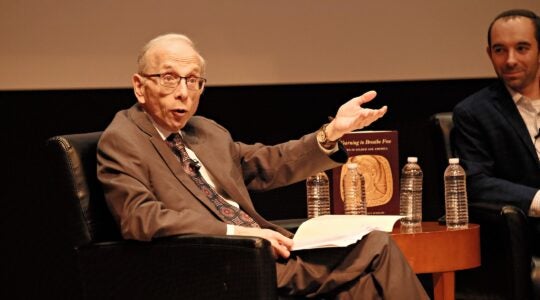April is a month crowded with Jewish observances and remembrances this year, both ancient and modern.
Fresh off of Passover and its inspiring message of freedom and spiritual liberation we face the cruel reality of Yom HaShoah, Holocaust Remembrance Day, observed on Sunday, April 7, recalling a time not only when 20th-century European Jews were denied their freedom but systematically put to death simply because they were Jewish. We are painfully aware that each year there are fewer survivors within our midst to give personal testimony to the tragedy. All the more reason why we should take part in religious and communal observances that mark the day, often featuring survivors telling their own stories.
Six million is an almost impossible number to think of in terms of victims of the Nazi regime. But one person’s authentic recollections can be a powerful reminder of the human suffering that took place and the physical and psychological scars that remain.
Recent events in Europe provide a troubling echo of the fact that anti-Semitism is still with us. Attacks on Jews and Jewish institutions, whether they are explained as anti-Israel in nature or motivated by hatred of Jews, are deeply worrying. They need to be addressed not only through statements by government officials but by civic and religious leaders in the local communities as well as through vigilance against future destructive acts and educational programs in the schools.
In Israel, Jews throughout the country will mark April 15 as Yom HaZikaron, Memorial Day for the thousands killed in the country’s wars these last six decades. Those who have been in Israel on that day understand that it is a far more somber, emotional observance than Memorial Day in the U.S. When the blast signaling a moment of silence across the country sounds, all movement stops, and one realizes that hardly a family in the Jewish state has not suffered a loss in Israel’s struggle for independence and survival.
In typical Israeli fashion, though, mourning and joy rub against each other as Yom HaZikaron gives way to Yom HaAtzmaut, Israel’s Independence Day, April 16. Perhaps the celebration is so spirited because people realize the depth of sacrifice that led to statehood.
Then, closing out the month of April, comes Lag b’Omer, the 33rd day of the counting of the Omer between Passover and Shavuot. Though a minor, ancient holiday, it is a joyous one. But there is no definitive reason why. Some say it is because the Jews marked a victory on that day in ancient times in the Bar Kochba revolt against the Romans; others say it was the only day no students of Rabbi Akiva died during a weeks-long plague. But neither explanation indicates a time for celebration. Still, amidst a calendar fraught with solemn occasions and anniversaries, it’s good to have a day to rejoice. We can always find a reason to be grateful.
As we enter a month rich in Jewish tradition and history, we note that its peaks and valleys reflect the human condition, with times to laugh and times to cry, and a responsibility to find meaning in each.
The New York Jewish Week brings you the stories behind the headlines, keeping you connected to Jewish life in New York. Help sustain the reporting you trust by donating today.




